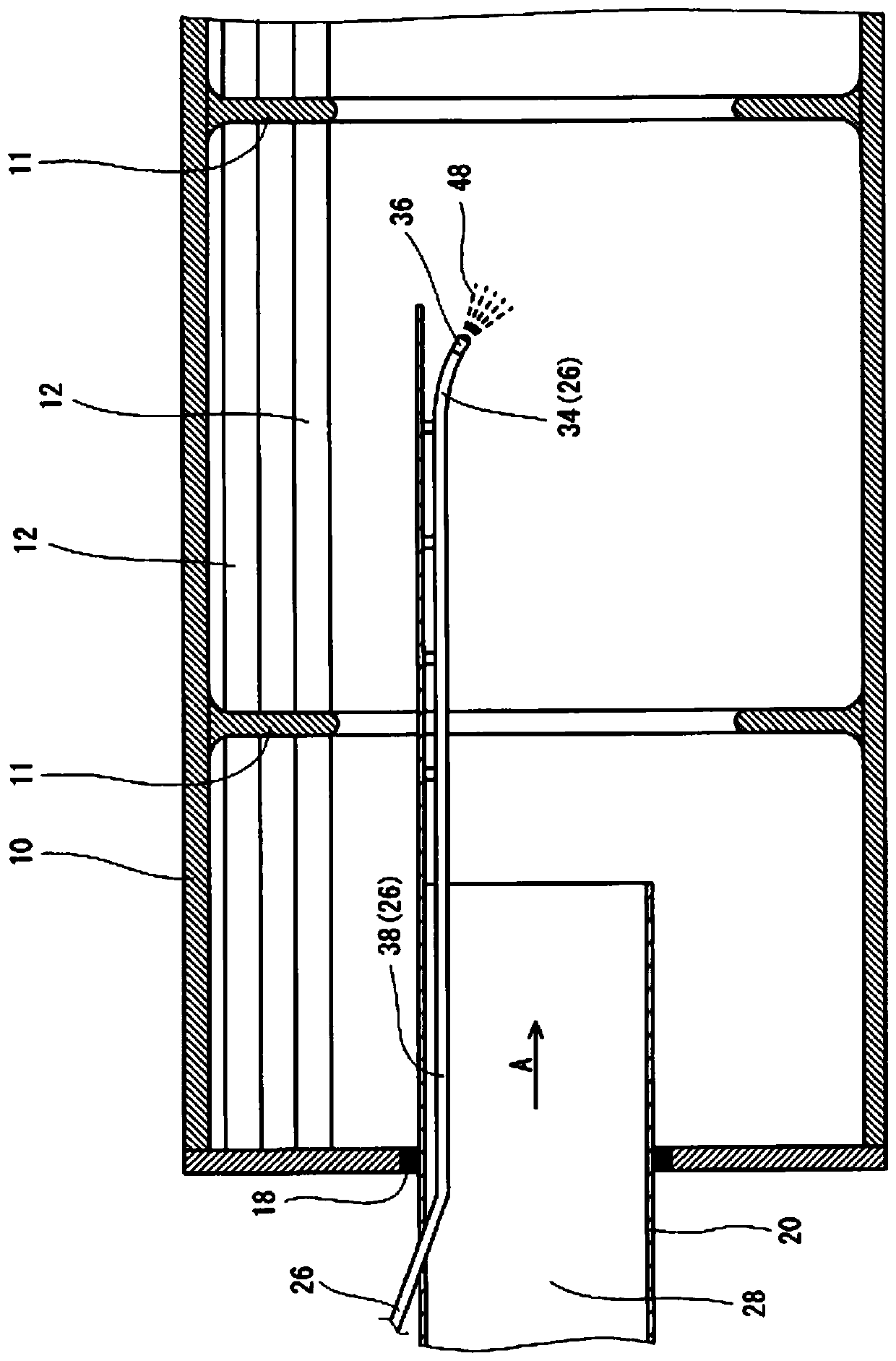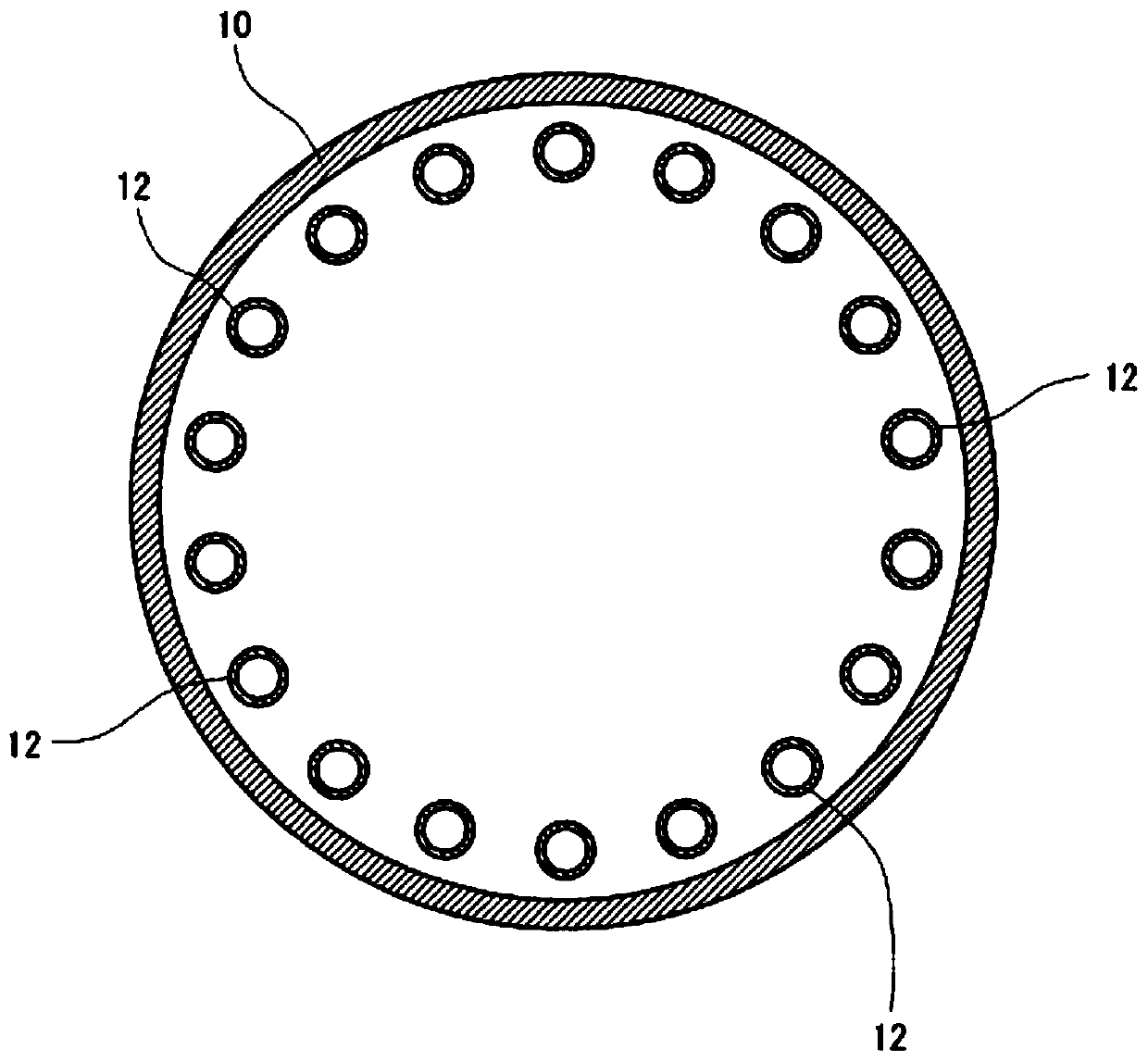Production method for water-absorbing resin powder, and production device for same
A manufacturing method and technology of resin powder, applied in heating devices, preliminary treatment to promote the drying of solid materials, furnaces, etc., can solve the problems of reduced drying efficiency, tape clogging, and reduced physical properties, and achieve performance and manufacturing efficiency. The effect of suppressing time reduction and physical property reduction
- Summary
- Abstract
- Description
- Claims
- Application Information
AI Technical Summary
Problems solved by technology
Method used
Image
Examples
Embodiment
[0368] The present invention will be described in more detail based on the following examples and comparative examples. However, the present invention should not be construed limitedly by these descriptions, and examples obtained by appropriately combining the technical means disclosed in each example are also included in the scope of the present invention. within range.
[0369] It should be noted that, unless otherwise noted, electrical equipment used in Examples and Comparative Examples (including instruments for measuring physical properties of water-absorbing resins) used a power supply of 60 Hz and 200 V or 100 V. In addition, the various physical properties of the water-absorbent resin of the present invention were measured at room temperature (20° C. to 25° C.) and a relative humidity of 50% RH±10%, unless otherwise noted.
[0370] Also, for convenience, "liter" may be described as "1" or "L", and "mass%" or "weight%" may be described as "wt%". In the case of measurin...
manufacture example 1
[0420] 300 mass parts of acrylic acid, 100 mass parts of 48 mass % sodium hydroxide aqueous solution, 0.61 mass parts of polyethylene glycol diacrylate (average n number 9), 0.1 mass % diethylenetriamine 5 acetic acid 3 sodium aqueous solution 16.4 parts by mass and 273.2 parts by mass of deionized water in monomer aqueous solution.
[0421] Next, the above-mentioned aqueous monomer solution whose temperature was adjusted to 38° C. was continuously supplied by a metering pump, and then 150.6 parts by mass of a 48 mass % sodium hydroxide aqueous solution was continuously mixed in-line. In addition, at this time, the liquid temperature of the monomer aqueous solution rose to 87 degreeC by the neutralization heat.
[0422] Furthermore, after mixing 14.6 mass parts of 4 mass % sodium persulfate aqueous solutions continuously in-line, it was continuously supplied to the continuous polymerisation machine which has the planar polymerisation belt provided with weirs at both ends so th...
manufacture example 2
[0425] In the first gel pulverization of Production Example 1, the particulate hydrogel PG (2) was obtained in the same manner as Production Example 1 except that the aqueous solution of betaine lauryldimethylglycine was not added. The granular hydrogel PG (2) contained no surfactant, had a moisture content of 44% by mass, an average particle diameter d1 in terms of dry mass of 135 μm, and a ratio of particles with a particle diameter of 150 μm or less was about 47% by mass. The physical properties of the granular hydrogel PG (2) are shown in Table 1 below.
PUM
| Property | Measurement | Unit |
|---|---|---|
| particle diameter | aaaaa | aaaaa |
| diameter | aaaaa | aaaaa |
| surface tension | aaaaa | aaaaa |
Abstract
Description
Claims
Application Information
 Login to View More
Login to View More - R&D
- Intellectual Property
- Life Sciences
- Materials
- Tech Scout
- Unparalleled Data Quality
- Higher Quality Content
- 60% Fewer Hallucinations
Browse by: Latest US Patents, China's latest patents, Technical Efficacy Thesaurus, Application Domain, Technology Topic, Popular Technical Reports.
© 2025 PatSnap. All rights reserved.Legal|Privacy policy|Modern Slavery Act Transparency Statement|Sitemap|About US| Contact US: help@patsnap.com



